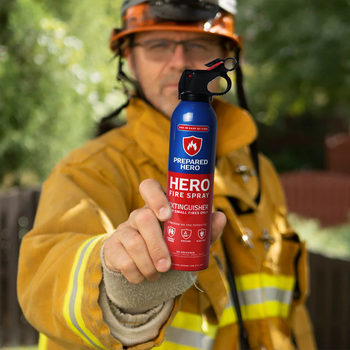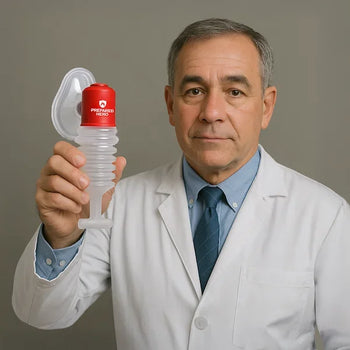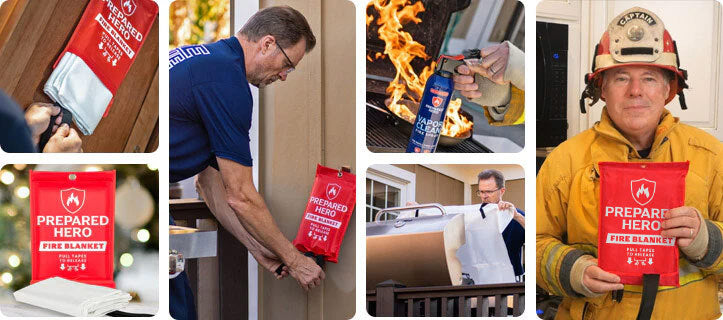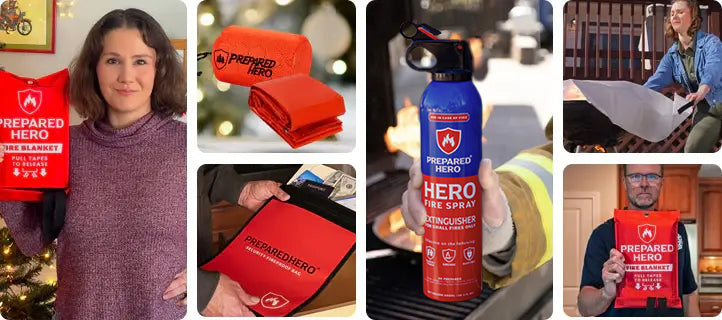Where you put your smoke detectors matters just as much as installing them. Proper placement makes sure they can detect...
Got old gasoline sitting around and not sure what to do with it? You’re not alone. Whether it’s leftover from a project or has been sitting in your garage, gas doesn’t last forever. In this guide, we’ll break down how to spot bad gasoline, how long it lasts, and how to dispose of it without causing problems.
Does Gasoline Go Bad?

Yes, gasoline can go bad, and it’s faster than you might think. Over time, its chemical makeup changes. That means your engine won’t burn it properly, which can lead to performance issues or even damage.
You might first notice something’s wrong if your car struggles to start, idles roughly, or loses power when accelerating. Sometimes, the check engine light comes on without a clear reason. That can also point to bad gas.
Another easy way to tell? The smell. If your gas smells off, or if it looks darker or murkier instead of clear, it’s probably gone bad. That fuel shouldn’t stay in your tank because old gas can clog lines, leave sticky residue, and corrode engine parts, especially if it contains ethanol.
Gas in your car can start degrading after just a month. In sealed containers, it can last three months without a stabilizer. Add a fuel stabilizer, and it could last longer.
To keep gas fresh, store it in a sealed, approved container in a cool, dry place. If you’re not using it soon, drain it and dispose of it properly. Don’t risk costly repairs; bad gas isn’t worth it.
How Long Can You Store Gasoline?
Gasoline doesn’t last forever, especially with ethanol in the mix. On average, regular gas from most gas stations lasts about three months. That’s because it usually contains ethanol, which absorbs water and breaks down faster.
Pure gasoline can last a little longer (up to six months) before it starts to degrade from oxidation. It can mess with your engine, cause poor performance, and leave sticky gunk in your fuel system once it goes bad.
If you store gasoline properly in a sealed, approved container, kept cool, dry, and away from sunlight, you might stretch its life to six months. Add a fuel stabilizer, and it could last longer.
Be careful not to use the last bit sitting at the bottom of a container. That’s where water tends to collect, and it’s not something you want in your engine. Also, don’t let your gas tank drop below a quarter full too often. It can increase the chances of your fuel pump pulling in water or debris.
If you’ve got old gas you’re not going to use, don’t just toss it. Check with your local waste disposal service for safe ways to get rid of it.
How to Properly Store Gasoline

Storing gasoline at home can be handy, especially if you use gas-powered tools or backup generators. However, it has to be done safely to avoid fire risks and fuel problems. Here's how to store gasoline properly:
1. Use the Right Containers
Store gasoline in approved fuel containers. They are built to handle the pressure and prevent leaks. Avoid using glass or random plastic jugs because they’re not safe. You should also make sure the lids are tightly sealed so fumes don’t escape.
2. Pick a Safe Location
Place gasoline in a cool, dry, and well-ventilated area. Keep it out of direct sunlight and far away from anything that gives off heat, like heaters and furnaces. A detached garage or shed is the best option. Plus, always keep it at least 50 feet away from where people live or hang out.
3. Handle It with Care
Don’t top the containers off when filling them. Leave a little room for the gas to expand. Handle gasoline carefully to avoid spills, and keep the containers clean. If you’re storing it for a while, add a fuel stabilizer and rotate your supply to use the oldest gas first.
4. Don’t Forget Fire Safety
Gasoline is highly flammable, so have a fire prevention kit nearby. Keep fire blankets, fire sprays, and fire extinguishers in the storage area. It’s a simple step that could prevent a raging disaster. Remember, it’s always better to be safe than sorry.
How to Properly Dispose of Gasoline

Got some old gasoline sitting around? Don’t just dump it or toss it in the trash. Gasoline is flammable and toxic, so you need to get rid of it safely. Here’s how to properly dispose of gasoline:
1. Check Local Rules First
Check your local guidelines before doing anything. Rules for gas disposal can change from one city to the next. Look at your city or county’s website, call the local waste disposal office, or ask your town hall.
2. Use a Hazardous Waste Facility
Most areas have a hazardous waste drop-off location. It’s the safest and most reliable way to get rid of old gasoline. You can usually find your local facility online or by asking local offices.
3. Look for Special Drop-Off
Some places offer free hazardous waste collection days. This gets rid of old gas and other chemicals without spending extra money. Check your city’s website or call the local waste authority for dates.
4. Hire a Disposal Service
If you can’t wait and need it gone fast, a commercial waste service can help. However, it will cost more.
What Not to Do

Never pour gas on the ground, in the trash, or down the drain. If it’s contaminated with fluids like antifreeze or brake fluid, it’s hazardous waste. Don’t try to reuse it, and always handle gasoline outside and away from flames.
Can Gasoline Be Recycled?
Yes, gasoline can be recycled, but not in the same way you’d recycle cans or bottles. Gasoline is hazardous, so it has to be handled by professionals or treated carefully if you’re doing it yourself.
If the gasoline isn’t too far gone, you can try reconditioning it. Just make sure you’re outside, away from flames or sparks, and not smoking. First, pour the gas through a coffee filter or cloth to get rid of debris. Then, let the filter dry and toss it in the trash. Next, let the gas sit in a clear container so any water settles at the bottom. Carefully pour off the cleaner gas and leave the water behind. Add some isopropyl alcohol to help break down leftover moisture. After that, mix your reconditioned gas with fresh gas in a 1:5 ratio.
However, it's best to take old gas to a local hazardous waste facility. They can recycle or safely dispose of it. Don’t ever dump it or mix it with other chemicals; it’s not worth the risk.
Where Is the Best Place to Dump Old Gas?

The best place to dump old gas is at a household hazardous waste facility. These places are set up to handle dangerous stuff like gasoline, so it won’t harm the environment or anyone’s health. Just check your city or county website, or call your local town hall. They’ll tell you where to go.
Some recycling centers also take gasoline, but not all of them do. Give them a call first to see if they accept it. Another option is to ask your local fire department or nearby auto repair shops. Some of them will take old gas off your hands, especially if they handle other hazardous waste.
Whatever you do, don’t dump it on the ground or down a drain. Old gasoline is dangerous. You should also make sure the gas is in a sealed, approved container before you drop it off anywhere. If you’re not sure where to start, contact your local government for help. They'll point you in the right direction.
How Do You Deal With Bad Gasoline?
Bad gasoline can mess with your car’s performance. The best way to fix it is to dilute the old gas with fresh fuel. A good rule is to use three parts of new gas to one part old. After adding the fresh gas, mix it well by gently rocking your car back and forth or shaking the gas container if it’s stored separately. This helps blend the fuels and improves your engine’s performance.
You can also use fuel additives that clean the fuel system and remove water or deposits. Closely follow the instructions on the product and drive your car to let it work through the system.
Watch out for signs like rough idling, stalling, or poor acceleration because they usually mean bad gas. If problems keep happening or you’re unsure, it’s best to ask a mechanic. Regular maintenance and using quality fuel keep your car running smoothly.
Is Two-Year-Old Gasoline Still Good?

Two-year-old gasoline isn’t safe to use. Over time, gas breaks down and loses its quality. This happens because the chemicals evaporate, oxidize, and create sticky deposits like gum and varnish. If your gas has ethanol (which most do), it can also soak up moisture. This causes water in your fuel.
Using old gas can also cause your engine to run rough, use more fuel, or even struggle to start. Plus, it might clog fuel filters and injectors, which can lead to expensive repairs, especially in older cars.
If you have a good amount of two-year-old gas, the safest move is to take it to a hazardous waste disposal site. If you only have a little, you might be able to run it through your engine. However, be ready for possible issues. Adding a fuel stabilizer could help, but it’s not a sure fix. Overall, fresh gas is always the better choice.
Will Gasoline Evaporate?
Yes, gasoline evaporates. It’s a volatile liquid, which means it turns into vapor easily, especially when it’s warm. If you spill some, it can disappear into the air within a few hours. How fast it evaporates depends on a few things. For instance, higher temperatures speed it up. Plus, more surface area means more gas exposed to air, so it evaporates faster. Wind also helps by blowing the vapor away.
If gasoline is in a sealed container, it won’t evaporate much, but if it’s open, you’ll lose it quicker. Keep in mind that gasoline vapors are flammable and dangerous, especially indoors or in tight spaces. That’s why you want to be careful when handling it. Avoid spills, don’t leave it sitting out, and dispose of old gas safely. It’s better to be safe than sorry with something that can easily catch fire or harm the environment.
How to Get Rid of Unwanted Gas

If you’ve got old or unwanted gasoline, don’t just dump it. The safest way to get rid of it is to take it to a hazardous waste facility or a recycling center that handles fuel. Many areas also hold collection events where you can drop it off. Check your local city website or call the public works department to find nearby options.
Some auto repair shops might take small amounts, but call them first. Whatever you do, don’t pour gas on the ground, in the trash, or down a drain. It’s dangerous and illegal in most places.
Do Auto Repair Shops Take Old Gas?
Yes, some auto repair shops take old gas. They do it as part of their waste disposal process. Some shops also reuse the old gas for cleaning or to power certain equipment like heaters. If the gas can’t be reused, they send it to licensed hazardous waste facilities to get rid of it safely.
However, not every shop has the same rules, so call around and ask your local repair shops if they accept old gasoline. If they don’t, don’t worry. There are other places that take it. You can try local hazardous waste centers, community collection events, or fire stations. Some stations use fuel for training.
Getting rid of old gas properly keeps the environment safe and prevents any fire hazards, so it’s worth checking your options.
Conclusion
Old gasoline isn’t just bad for your engine. It’s also a fire hazard. Gas fumes are flammable and can ignite with just a tiny spark. That’s why it’s so important to store gas in the right containers, away from heat, and dispose of it safely. Whether you recycle it or take it to a hazardous waste site, do it the right way. Safe handling keeps your car running and helps prevent gasoline fires.
Do you want reliable, easy-to-use, and affordable tools to put out small fires before they spread? Check out Prepared Hero’s fire prevention tools here, and get up to 51% off on certain items. Stay prepared, hero!


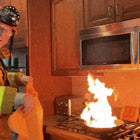 Fire
Fire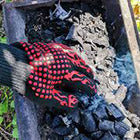 Safety
Safety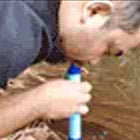 Survival
Survival Protection
Protection New
New
 Fire
Fire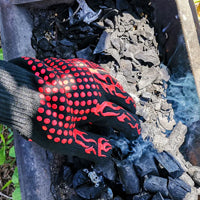 Safety
Safety Survival
Survival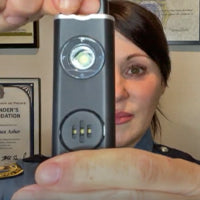 Protection
Protection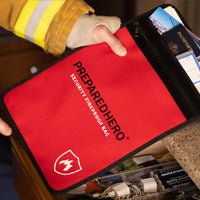 New
New



